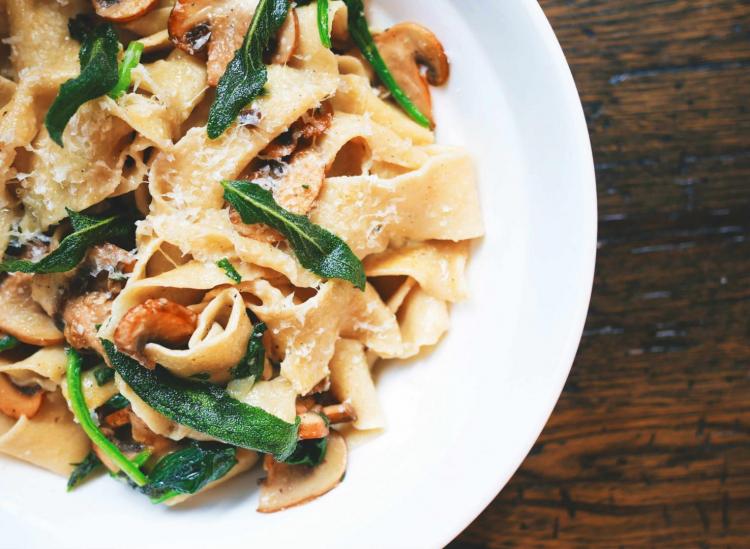Here’s A Beginner’s Guide To Making Your Own Pasta Without A Pasta Machine

Unsplash
The process of making pasta can be a little daunting, but once you break it down, the task is actually really easy and you don’t even need heavy machinery to do it. If you have flour, eggs and salt, you can make pasta in no time.
If you’re asking yourself, “Why the hell would I make fresh pasta when I can easily buy a box at the store and exert basically no energy?” There’s a BIG difference between dry and fresh pasta, and it’s worth learning the difference.
Fresh pasta is usually cut into strips of fettuccine or cut into squares to make ravioli. Fresh pasta is known for having a silky, eggy, soft and silky texture. It also cooks in no time and the concept of al dente doesn’t really exist with fresh pasta. On the other hand, dry pasta doesn’t have eggs, it’s denser, firmer, takes a little longer to cook and it stands up to heavier sauces.
Here’s what you’ll need to make fresh pasta:
1 cup all-purpose flour
1/2 teaspoon salt
1 egg, beaten
Here’s how to make the magic happen:
1. Boil a pot of water and salt it generously.
2. In a medium bowl, mix your dry ingredients: flour and salt. When you’re in a real kitchen making huge batches of pasta, chefs usually use a giant stand-alone mixer, but since you’re making a personal amount of pasta you can just do it on a countertop. Pour out the flour and salt mixture into a pile and then make a well in the center.
3. Beat the egg and pour them into the well in the center of the flour.
4. Slowly incorporate the dry ingredients into the egg with a fork until it’s all combined into a stiff dough.
5. If the dough seems too dry, stir in a little more water.
6. Lightly flour a surface, knead the dough for about 3 to 4 minutes and then form it into a ball.
7. Cover the ball of dough in plastic wrap and let it sit in the fridge for a half hour.
8. Cut the dough into four chunks (keep the parts you’re not using covered in plastic wrap) and roll each chunk out into desired thinness.
9. Cut the dough into ribbons at the length that you want your noodles to be. For fettuccine, they should be about 1/6-inch ribbons and for tagliatelle, about 1/4-inch ribbons. Dust the noodles with a little flour to avoid sticking.
10. Drop your noodles into the boiling water for about 90 seconds, anything over three minutes is too much, and remove them from the water (make sure to reserve some pasta water if you need extra liquid for your sauce).
11. Toss the noodles with your favorite sauce.
With just three ingredients, a rolling pin, a knife and a pot of boiling water, you can have fresh pasta on your plate in under an hour.











